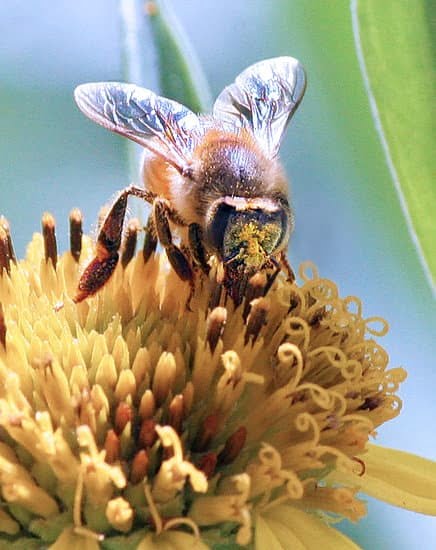Are you looking for landscape garden ideas UK? The United Kingdom is known for its beautiful gardens, and creating your own stunning landscape garden is a wonderful way to beautify your outdoor space. From choosing the right plants to maximizing space and incorporating sustainable practices, there are many factors to consider when designing a landscape garden in the UK.
The UK has a rich tradition of landscape gardening, with a focus on creating naturalistic and picturesque settings. From the formal gardens of stately homes to wild and romantic cottage gardens, there is a diverse range of styles to draw inspiration from. Whether you have a small urban garden or a sprawling country estate, there are endless opportunities for creative landscaping in the UK.
In this article, we will explore the best plants for UK landscape gardens, design tips for small spaces, how to maximize space, incorporate sustainable practices, add color and texture, cultivate low-maintenance gardens, seasonal maintenance tips, and how to include water features. By the end of this guide, you will have all the knowledge you need to create a stunning landscape garden that thrives in the unique climate and conditions of the UK.
Best Plants for a UK Landscape Garden
When planning a landscape garden in the UK, it’s important to carefully consider the types of plants that will thrive in the local climate. The temperate maritime climate of the UK means that gardeners have a wide variety of plant options to choose from. When selecting plants for your UK landscape garden, consider incorporating a mix of native and non-native species to create a diverse and visually interesting environment.
To make the most of your UK landscape garden, consider including some of these popular plant choices:
- Lavender: This fragrant and resilient plant thrives in the UK climate and adds a pop of color to any garden.
- Hydrangeas: These beautiful flowering shrubs come in a variety of colors and are well-suited to the UK’s cooler temperatures.
- Boxwood: Perfect for adding structure and formality to your landscape, boxwood is a classic choice for UK gardens.
- Roses: No UK garden would be complete without at least one variety of this beloved flower. From climbers to shrub roses, there’s a type for every style of garden.
In addition to these popular choices, don’t forget to consider ornamental grasses, perennial herbs, and evergreen shrubs when selecting plants for your UK landscape garden. By choosing a mix of plant types, you can create an environment that is visually appealing year-round. With careful planning and consideration of the unique needs of your space, you can create a stunning and sustainable landscape garden that will thrive in the UK climate.
Design Tips for Small UK Gardens
When it comes to designing a small garden in the UK, maximizing space is key. One of the best landscape garden ideas UK homeowners can implement is to utilize vertical gardening. This involves using trellises, hanging planters, and wall-mounted containers to make the most of limited space. Additionally, when selecting plants for a small UK garden, choosing compact and dwarf varieties can help create a lush and beautiful garden without overcrowding.
Another important factor to consider when designing a small UK garden is the layout. Creating distinct areas within the garden, such as seating nooks, dining spaces, and planting beds, can make the space feel larger and more functional. Incorporating pathways with materials like gravel or stepping stones can also add visual interest while making the garden more accessible.
Incorporating raised beds in a small UK garden can also be a great way to maximize space. Raised beds not only provide good drainage for plants but also create defined planting areas that can help organize the garden. Additionally, they can be productive spaces for growing vegetables or herbs in a limited area.
| Tip | Details |
|---|---|
| Vertical Gardening | Utilize trellises, hanging planters, and wall-mounted containers. |
| Layout | Create distinct areas within the garden with seating nooks & pathways. |
| Raised Beds | Provide good drainage for plants & create defined planting areas. |
Maximizing Space in a UK Landscape Garden
When it comes to landscape garden ideas in the UK, maximizing space is often a top priority due to the limited outdoor area in many residential properties. One effective way to make the most of a small garden is by using vertical space.
Consider adding trellises, hanging plants, or wall-mounted planters to create a lush and visually appealing garden without taking up valuable floor space. This not only adds greenery to the landscape but also creates a sense of privacy and tranquility.
Another strategy for maximizing space in a UK landscape garden is to carefully plan the layout and organization of different elements. Opt for furniture and accessories that can serve multiple purposes such as built-in seating with hidden storage, or folding tables and chairs that can be easily tucked away when not in use. Additionally, utilizing modular or customizable outdoor storage solutions can help keep tools, equipment, and gardening supplies neatly organized without cluttering the space.
Incorporating clever zoning techniques can also help maximize space in a UK landscape garden. Create distinct areas for dining, lounging, cooking, and gardening by using different materials like decking, paving, gravel, or artificial grass. By clearly defining each zone, you can make your small garden feel more functional and spacious while also creating visual interest throughout the outdoor space. With these creative design strategies, even the smallest UK landscape gardens can feel open and inviting for both relaxation and entertaining.
Incorporating Sustainable Practices in UK Landscape Gardening
One of the key factors to consider when designing a landscape garden in the UK is sustainability. With the increasing focus on environmental conservation and reducing carbon footprints, it is important to incorporate sustainable practices into your garden design. One way to do this is by choosing native plants that are well adapted to the local climate and require less water and maintenance. By selecting native species, you can promote biodiversity and support the local ecosystem.
Another sustainable practice to consider for your UK landscape garden is using organic fertilizers and natural pest control methods. Avoiding synthetic chemicals not only benefits the environment but also creates a healthier space for wildlife, pets, and humans. Additionally, installing a rainwater harvesting system can help reduce reliance on mains water, especially during drier periods. This collected rainwater can then be used for watering plants in the garden, reducing overall water consumption.
Finally, incorporating eco-friendly materials into hardscaping elements such as pathways, decking, and seating areas can further enhance the sustainability of your landscape garden. Using reclaimed or locally-sourced materials reduces carbon emissions from transportation and supports the circular economy. By integrating these sustainable practices into your UK landscape garden design, you can create a beautiful outdoor space that respects and preserves the natural environment for years to come.
How to Add Color and Texture to a UK Landscape Garden
When it comes to adding color and texture to a UK landscape garden, there are several options that can make your outdoor space stand out. One popular choice is to incorporate a variety of flowering plants that thrive in the UK climate. Some great options include lavender, roses, and geraniums. These plants not only add beautiful pops of color to your garden but also bring different textures with their unique foliage.
In addition to flowering plants, incorporating different types of foliage can also add depth and texture to your landscape garden. Consider adding ornamental grasses, ferns, and evergreen shrubs to create visual interest and contrast in your garden. These plants not only provide different textures but also offer year-round appeal, making your garden look stunning no matter the season.
To further enhance the color in your UK landscape garden, consider using a variety of hardscaping materials such as decorative stones or colorful gravel for pathways, borders, or even as mulch in flower beds. These material choices can add visual interest and complement the colors of your plants, enhancing the overall aesthetic of your garden.
| Flowering Plants | Foliage |
|---|---|
| Lavender | Ornamental Grasses |
| Roses | Ferns |
| Geraniums | Evergreen Shrubs |
Cultivating a Low-Maintenance UK Landscape Garden
Choosing Low-Maintenance Plants
When designing a low-maintenance landscape garden in the UK, it’s important to select plants that thrive in the local climate and require minimal care. Consider native plants such as lavender, heather, and ornamental grasses, which are well-suited to the UK’s varying weather conditions and soil types. Additionally, evergreen shrubs and trees can provide year-round interest without the need for frequent pruning or deadheading.
Efficient Garden Design
Incorporating smart design elements into your landscape garden can also help reduce the amount of maintenance required. Opt for hardscaping features such as gravel paths or wooden decking to minimize the need for mowing or weeding. Raised beds and container gardening can also make it easier to control weeds and pests while adding visual interest to your outdoor space.
Low-Maintenance Maintenance Practices
Finally, implementing sustainable practices can further reduce the amount of time and effort needed to maintain your UK landscape garden. For example, using mulch around plant beds can help retain moisture in the soil, reducing the need for frequent watering. Additionally, installing an efficient irrigation system with programmable timers can ensure that your plants receive adequate water without requiring daily attention.
By incorporating these low-maintenance ideas into your UK landscape garden design, you can create a beautiful outdoor space that enhances your lifestyle without becoming a burden on your time and resources.
Seasonal Maintenance Tips for a UK Landscape Garden
A well-maintained landscape garden can enhance the beauty of any property, and in the UK, maintaining a garden is especially important due to the ever-changing weather and seasons. With proper care and attention, your UK landscape garden can thrive throughout the year. Here are some seasonal maintenance tips to keep your garden looking its best no matter the time of year.
Spring Maintenance
In spring, it’s essential to tidy up your garden after the winter months. Remove any debris, weeds, and dead foliage from flower beds and borders. Prune shrubs and trees as needed, and divide perennials that have become overcrowded. This is also a great time to top-dress beds with compost and fertilizer to give your plants a healthy start for the growing season.
Summer Maintenance
During the summer months, your main focus should be on watering, weeding, and deadheading flowers to encourage continuous blooming. Keep an eye out for pests and diseases, and address them promptly to prevent them from spreading throughout your garden. Regular mowing of lawns is also crucial at this time of year.
Fall Maintenance
As autumn approaches, it’s time to start preparing your garden for the cooler months ahead. Clear out any spent annuals and vegetables, but leave some seed heads for wildlife to enjoy over winter. Plant spring-flowering bulbs such as daffodils and tulips for a burst of color early in the following year. Finish off by applying a layer of mulch to protect plants during the winter.
By following these seasonal maintenance tips for your UK landscape garden, you can ensure that it looks beautiful all year round while also supporting its long-term health and vitality.
Incorporating Water Features in a UK Landscape Garden
When it comes to creating a stunning landscape garden in the UK, incorporating water features can add a sense of tranquility and beauty. Water features not only enhance the aesthetics of your garden but also attract wildlife and create a soothing atmosphere for relaxation. Here are some ideas for incorporating water features into your UK landscape garden:
- Pond: A pond can be a focal point of your garden, providing a habitat for aquatic plants, fish, and other wildlife. You can choose from pre-formed ponds or flexible liners to create a natural-looking water feature that fits seamlessly into your garden design.
- Fountain: A fountain adds movement and sound to your garden, creating an enchanting ambiance. Whether it’s a traditional tiered fountain or a modern sculpture fountain, there are various styles to choose from to complement your landscape garden.
- Waterfall: If you have natural elevation in your garden, consider installing a waterfall feature. The sight and sound of cascading water can transform any outdoor space into a peaceful retreat.
In addition to the aesthetic appeal, water features also offer practical benefits such as attracting beneficial insects like dragonflies and providing drinking water for birds. However, it’s important to carefully plan the placement and maintenance of water features to ensure they harmonize with the overall design of your landscape garden.
Ultimately, incorporating water features into your UK landscape garden can elevate its visual appeal while creating a serene atmosphere for relaxation and enjoying the outdoors. With careful planning and consideration of the space available, you can seamlessly integrate water features into your landscape design to create an idyllic outdoor sanctuary for years to come.
Conclusion and Final Tips for Creating a Stunning UK Landscape Garden
In conclusion, creating a stunning UK landscape garden requires careful consideration of the region’s unique climate and conditions. By carefully selecting the best plants for a UK landscape garden, incorporating sustainable practices, and maximizing space, gardeners can achieve beautiful and thriving outdoor spaces. Design tips for small gardens, including the use of vertical gardening and strategic placement of planters, can also help make the most of limited space.
To add color and texture to a UK landscape garden, consider using a variety of flowers, shrubs, and trees that bloom at different times throughout the year. By cultivating a low-maintenance garden with native plants and efficient irrigation systems, it is possible to enjoy a beautiful outdoor space without investing excessive time or resources. Additionally, incorporating water features such as ponds or fountains can create a tranquil atmosphere while attracting wildlife to the garden.
As with any garden, seasonal maintenance is essential for keeping a UK landscape garden in top condition. From pruning and mulching to protecting plants from frost during winter months, there are specific tasks that should be performed throughout the year to ensure the health and beauty of the garden. Ultimately, by implementing these final tips and ideas for UK landscape gardening, individuals can create their own stunning outdoor retreats that celebrate the natural beauty of the British landscape.
Frequently Asked Questions
What Is the Average Cost of Landscaping a Garden in the UK?
The average cost of landscaping a garden in the UK can vary greatly depending on the size and complexity of the project. Generally, smaller gardens with basic features may cost around £1,000 to £5,000, while larger gardens with more intricate designs and higher-end materials can range from £10,000 to £30,000 or more.
Factors such as the choice of plants, materials, labor costs, and any additional features like patios or water features will all contribute to the overall cost.
How Do I Make My Yard Look Like an English Garden?
To make your yard look like an English garden, consider incorporating elements such as lush greenery, colorful flowers in a mix of sizes and shapes, meandering pathways lined with traditional materials like gravel or natural stone, a cozy seating area surrounded by plants, and perhaps a small water feature like a fountain or birdbath.
Achieving that quintessential “wild but controlled” look of an English garden often involves layering plantings for depth and using a variety of textures.
How to Do a Garden Layout?
When planning a garden layout, it’s essential to consider factors such as sunlight exposure, soil quality, drainage patterns, and existing structures like trees or buildings. Start by mapping out areas for different purposes – whether it’s dining and entertaining spaces, flowerbeds or vegetable patches.
Pay attention to flow and accessibility within the garden so it feels inviting and easy to navigate. Additionally, think about how various plants will complement each other aesthetically throughout multiple seasons while also considering their individual water and care requirements.

Welcome to my gardening blog! I am passionate about plants and enjoy sharing my knowledge and experiences with others. In this blog, I will write about everything related to gardening, from tips on how to get started to updates on my own garden projects.





